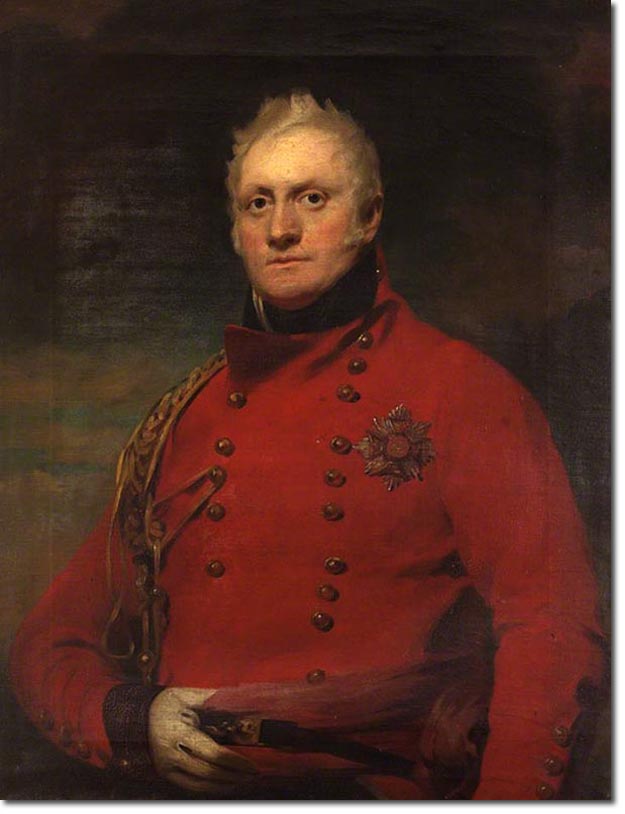|
|


|
|
John Hope was born on 17 Aug 1765 at Abercorn. He was the only son of John Hope, 2nd Earl of Hopetoun, by his second wife Jane Oliphant. His mother died when he was aged one. He was commissioned as Cornet Hon John Hope into the 10th Light Dragoons in 1784 but left that regiment soon after. He sat as Member of Parliament for Linlithgowshire from 1790 to 1800.
He took part in the capture of the French West Indies and Spanish West Indies in 1796 and 1797. In 1799 he was sent to Den Helder as Deputy Adjutant-General and was present at the Battle of Bergen and the Battle of Castricum. In 1801 he was sent to Cairo and then to Alexandria to take the surrender of the French garrisons there. He commanded a Division during the advance into Spain and commanded the British left at the Battle of Corunna in 1809, succeeding to overall command when Sir John Moore was killed. Later that year he commanded the reserve army during the Walcheren Campaign. He was appointed Commander-in-Chief, Ireland and was admitted to the Irish Privy Council in 1812. He then commanded the First Division under The Duke of Wellington at the Battle of Nivelle and at the Battle of the Nive in 1813. He served as Lord-Lieutenant of Linlithgowshire from 1816 to 1823. On 17 May 1814, two years before he succeeded in the earldom, he was raised to the peerage in his own right as Baron Niddry, of Niddry Castle in the County of Linlithgow, with remainder to the male issue of his father. In 1816 he succeeded his elder half-brother as fourth Earl of Hopetoun. Lord Hopetoun married firstly Elizabeth, daughter of Charles Hope-Weir, in 1798. After her death he married Louisa Dorothea Wedderburn. He died on 27 August 1823, aged 58, and was succeeded in his titles by his eldest son from his second marriage, John. Lady Hopetoun died in 1836. The portrait is by John Watson Gordon, painted in 1824 and is at Abbotsford House. Following Lord Hopetoun's death, the Hopetoun Monument was erected on Byres Hill, East Lothian, in 1824. This was followed in 1826 by a similar monument on Mount Hill in Fife. In 1824 the city of Edinburgh commissioned a bronze statue of Lord Hopetoun, by Thomas Campbell, and originally designed as a centrepiece for Charlotte Square in 1829, but which was eventually placed in St Andrew Square in 1834, in front of Dundas House where he had acted as vice governor of the bank. A boarding house at Wellington College, Berkshire, was named after him. It has recently been turned into a girls house.
1784 Cornet in 10th Light Dragoons |
Armed Forces | Art and Culture | Articles | Biographies | Colonies | Discussion | Glossary | Home | Library | Links | Map Room | Sources and Media | Science and Technology | Search | Student Zone | Timelines | TV & Film | Wargames